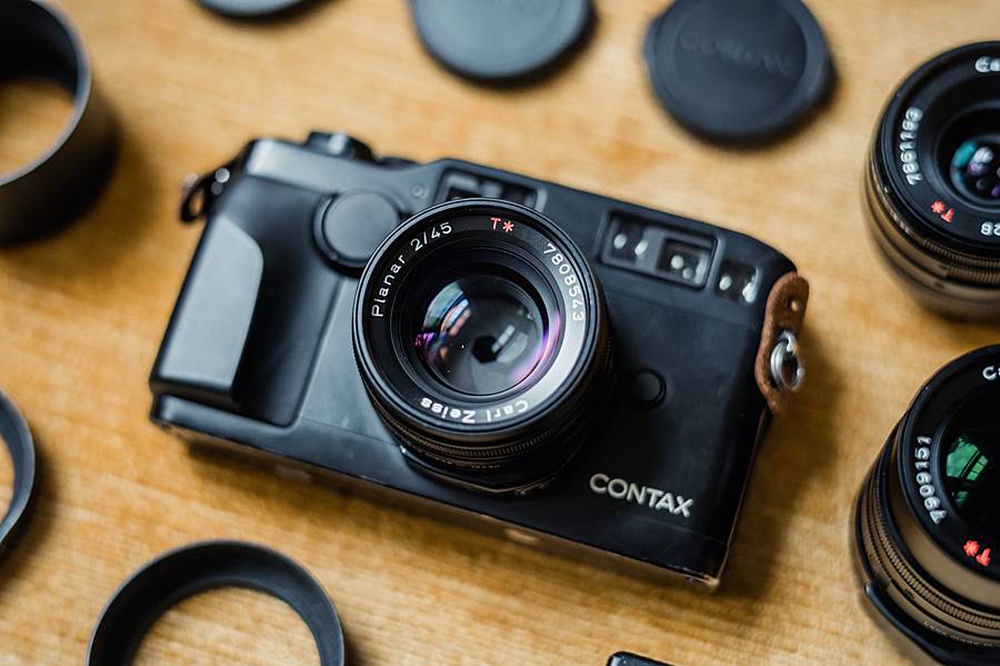In about a week I’m heading to Europe for a short vacation. Christine is already there on a hiking tour. I’ll join her when she’s done. which means I’ve got to prepare and pack soon. More important than deciding which hiking boots to bring or how many pairs of socks I’ll need is choosing the camera (and film) to take with me, so I will use this post to work through some options.
First off, I may have too many cameras (if such a thing is possible). It’s not as if I have one main camera body or system with one or two lenses. Since getting back into photography seriously over the last few years I’ve collected Nikon, Contax, Leica, and Hasselblad film cameras while reducing my digital cameras to just one Nikon DSLR. I have options every time I want to shoot.
That doesn’t mean I can take a suitcase full of cameras on my trip, nor would I ever want to. For this trip we’ll be hopping between locations. Keeping the kit light and limited is important. Even though it means I’ll be forced to carry film, keeping the kit small eliminates the Nikon D5 DSLR. It’s too much of a heavyweight (literally) nor will I need the capabilities it is so famous for. The Hasselblad 500CM may have gone to the moon on a rocket, but I am not going to carry one to Europe on an airplane. That takes the heavyweights out of consideration.
My favorite cameras are small, light, manual focus, and manual exposure 35mm. I took the manual, mechanical Nikon FM2 on the Camino. The Leica R6.2 and the Contax S2 are other favorites. Even when I step up to a more “modern” camera, I’m drawn to anything that reflects that design. Unfortunately, my Nikon F4 and F5 are almost as big and heavy as the D5, which crosses them off the list.
So why not just take one of the smaller SLRs like the Leica or Nikon? Because I can sometimes go too far down the “dial it in” rabbit hole trying to get the shot. I love those cameras because their very design slows me down. You must take time to compose, focus, and set the exposure. On the Camino I was traveling alone so a few extra minutes to get the shot didn’t matter. I wanted to go slow. That was the whole point. When I’m traveling with others nobody wants to wait for me to figure out the right setting or get the focus point just right. Autofocus and autoexposure are “necessary” conveniences.

That’s leaves just one option that is small and light while also being capable of automatic exposure with a reasonable autofocus capability — my Contax G2. People have called it the “most advanced rangefinder camera” and the “ultimate modern rangefinder“. The camera body and lenses are small, owing to the rangefinder design, and G system’s Carl Zeiss lenses are “amazing”. I’m lucky enough to own the Contax G2 black version which is mechanically and electronically identical to the “champagne” colored titanium edition but more discrete for travel and street photography.
For the G2 I have a delightful selection of travel lenses from the Biogon T* 28/2.8 and Planar T* 45/2 to the unique for a rangefinder Vario-Sonnar T* 35-70/3.5-5.6 zoom. I could take all 3 and not weigh myself down too much.
I won’t pack my bag for a few more days which means there’s always time to change my mind. The Leica R9 and Contax S2 keep calling to me, but if I were leaving tomorrow the Contax would be coming with me.
Now I have to decide what film to bring along.

Great read. Rangefinders are something I’m a novice with. I have an old one lens choice Zorki. That’s it. You seem to know your cameras well and first instincts and all that? Usually gut feeling works. I used to pack and put 3 Pentax SLR’s and one 645 in the bag, various lens choices and up on holiday using only the one SLR body and two lens. Pentax LX with a 50 mm and 120mm. No flash so 400 asa Ilford B + W HP5 film. But that wasn’t abroad! Love your travel light thinking. All the best for your holidays. Cheers.
LikeLike
👏👏👏✍️📷 perfect article
LikeLike
Regardless of which camera you take, I recommend you take Kodak Portra, 800 and 160. The 800 is for the low light situations and surprises by its saturation uncommon for a high ISO film. With 160 it is the opposite: for daylight situations with an uncommon pastel palette and unrivaled resolution. Scan them when you have them developed, and if the subject demands it, make a black and white image out of the scan in postproduction.
LikeLike